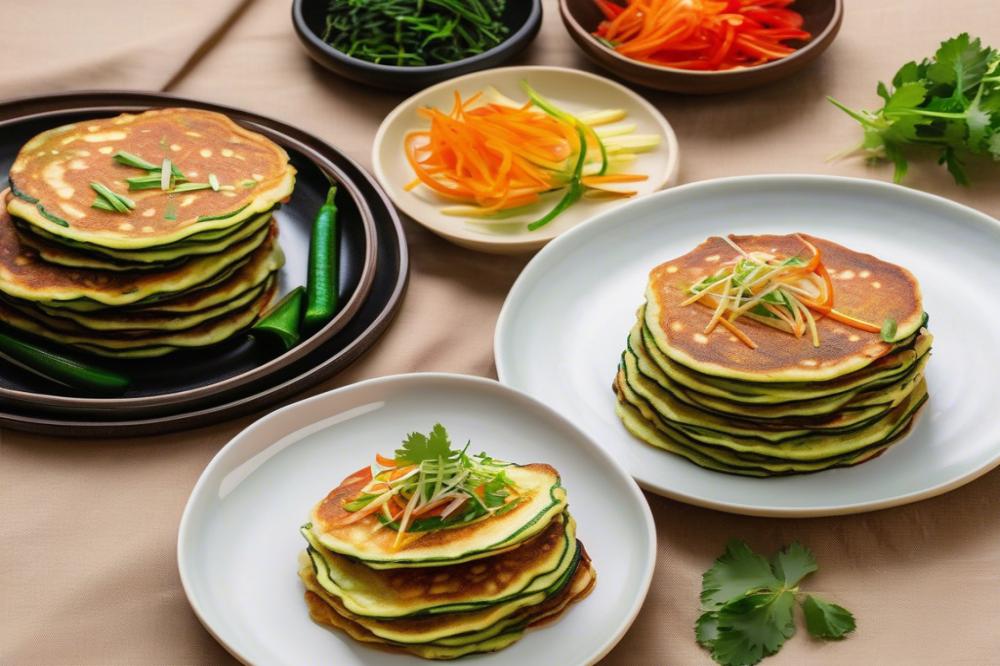Introduction
Hobakjeon are savory pancakes made primarily with zucchini. This dish has a special place in Korean cuisine, celebrated for its delightful taste and crispy texture. Often served as a side dish, it pairs well with various Korean meals. Many enjoy these pancakes not just for their flavor, but also for their nutritional benefits.
zucchini shines in this recipe. It provides moisture and a subtle sweetness that balances the dish. Because of the ingredients used, Hobakjeon appeals to vegetarians and those following a gluten-free diet. The easy recipe makes cooking accessible for many home chefs, regardless of their experience level.
In addition to being delicious, these pancakes are also a healthy cooking choice. Fried zucchini maintains its vibrant color while offering a satisfying bite. Korean Zucchini Pancakes are often made during summer when zucchini is plentiful. Families gather to enjoy these treats, showcasing their popularity in various households.
Understanding Hobakjeon
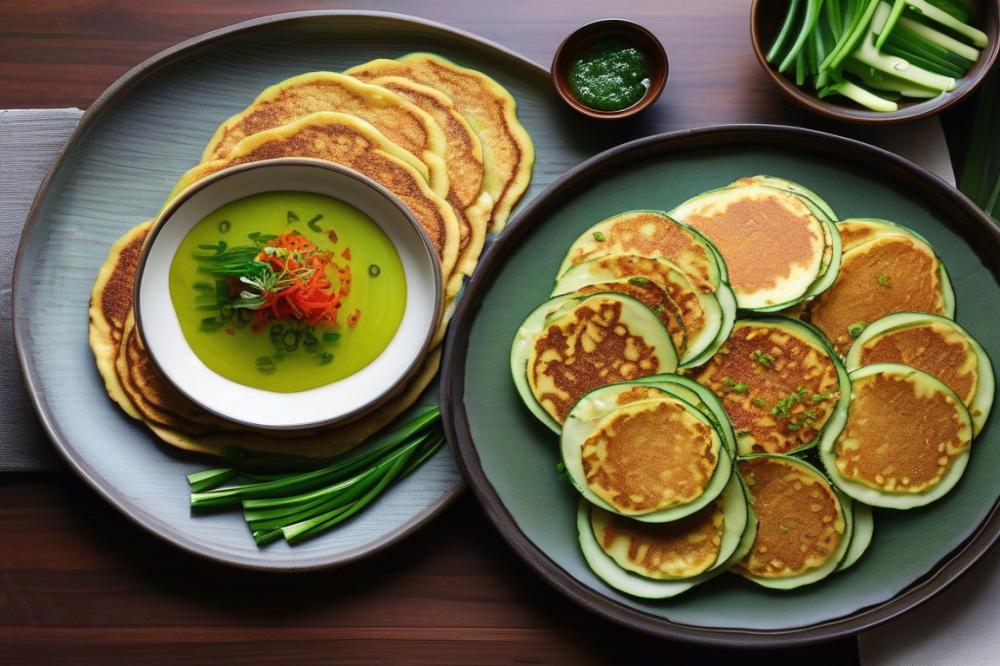
Definition of Hobakjeon
Hobakjeon refers to Korean Zucchini Pancakes. These savory pancakes are made with grated zucchini mixed with flour and eggs. The mixture is then fried until golden brown. Often served as a side dish, they add flavor and texture to any meal. People enjoy them for breakfast, lunch, or dinner.
Historical Context in Korean Cooking
Korean cuisine has a rich history of incorporating vegetables. Zucchini became popular, especially during the summer months when it is fresh and abundant. Preparing hobakjeon demonstrates traditional cooking methods that families have used for generations. Women would gather in the kitchen, sharing recipes and techniques. They passed down these traditions, making it a nostalgic dish for many.
Variations of Zucchini Pancakes in Different Cultures
Around the world, people make their version of zucchini pancakes. In Italy, cooks create a similar dish called “frittelle,” which features zucchini and cheese. Meanwhile, in the Middle East, people enjoy fried zucchini with herbs and spices. Each culture brings its flavor to the table. Though recipes may vary, the comforting idea of fried zucchini remains universal.
The Role of Zucchini in Korean Cuisine
In Korean cooking, zucchini is a versatile vegetable. It can be grilled, stir-fried, or made into tasty side dishes. Its mild flavor allows it to blend well with various ingredients. This makes it a favorite among vegetarians looking for healthy options. Additionally, it is often included in stews and soups. Zucchini’s low-calorie count fits perfectly into the concept of healthy cooking. Many appreciate its nutritional value and refreshing taste.
Ingredients List and Cooking Instructions
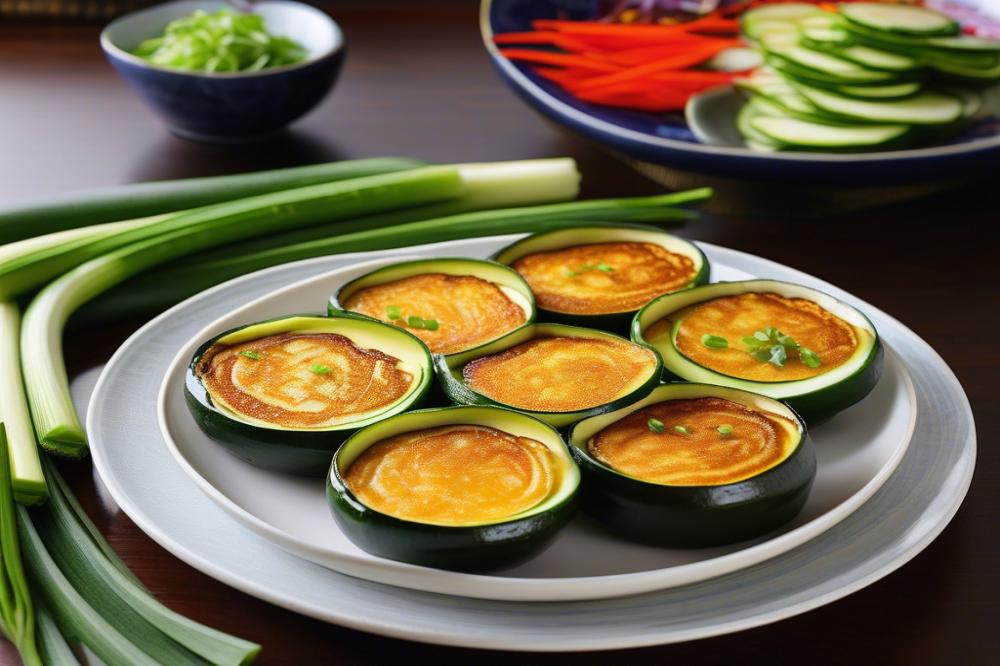
Ingredients with Quantities
- 2 medium zucchinis (about 500g)
- 1 cup all-purpose flour or gluten-free flour
- 1 large egg
- 1/2 teaspoon salt
- 1/4 teaspoon black pepper
- 1/2 cup water (adjust for batter consistency)
- Vegetable oil for frying
Nutritional Information for Each Ingredient
- Zucchini: This is low in calories and high in vitamins.
- Flour: Acts as a key carbohydrate source.
- Egg: Offers protein and healthy fats.
- Oil: Provides an essential energy source.
Step-by-Step Cooking Instructions
Preparing the Zucchini
Start by washing the zucchinis well. Cut off the ends, then grate them using a box grater. This method helps release excess moisture. Once grated, place them in a clean kitchen towel. Squeeze out as much water as possible. This step is important for crispy pancakes.
Mixing the Batter
In a large bowl, combine the grated zucchini with flour, egg, salt, and black pepper. Mix thoroughly until the ingredients are well incorporated. Gradually add water to the mixture. Adjust the amount to achieve a smooth, thick batter. It should hold together but still flow slightly.
Frying Method
Heat a non-stick skillet over medium heat. Pour a little vegetable oil into the pan. Once hot, use a ladle to scoop some batter and pour it into the skillet. Flatten the batter gently with the back of the ladle. Fry each side for 3-4 minutes or until golden brown and crispy. Use more oil as needed for subsequent batches.
Serving Suggestions
Serve the pancakes hot, as a side dish or a snack. Consider pairing them with dipping sauces, such as soy sauce or a spicy gochujang mix. They make a tasty vegetarian option. Enjoy the delicious combination of flavors in these savory pancakes.
Health Benefits of Hobakjeon
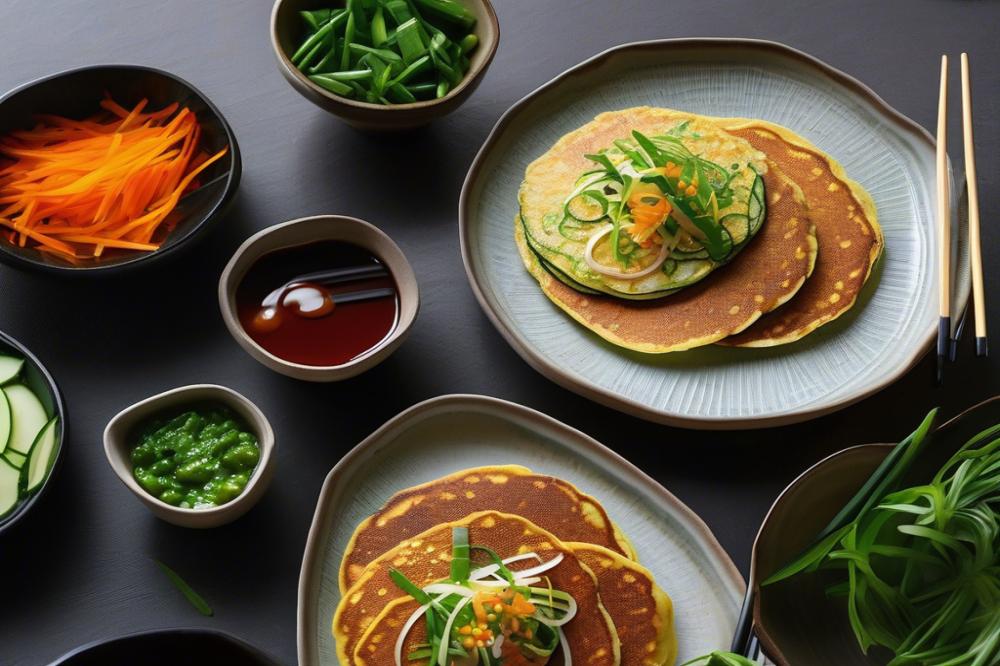
Zucchini is a key ingredient in Korean pancakes. It is low in calories and high in vitamins. This vegetable contains vitamin C and potassium, which support overall health. Incorporating fried zucchini into meals can boost nutrient intake. Additionally, zucchini has a high water content, which helps keep you hydrated.
Eggs also play an important role in this dish. They provide protein and essential amino acids. Consuming eggs helps build and repair tissues in the body. This ingredient adds richness and flavor to the pancakes, making them satisfying. Moreover, the combination of eggs and zucchini creates a balanced meal.
When compared to other savory pancake options, this dish stands out. Many pancakes can be heavy and high in calories. Yet, this easy recipe is gluten-free and suitable for vegetarians. It offers a healthier alternative without sacrificing taste. Pairing these pancakes with a dipping sauce can enhance their flavor even more.
Encouraging healthy cooking habits is vital in today’s world. Making dishes like these can inspire more vegetable consumption. Cooking with fresh ingredients helps people feel good. Choosing zucchini and eggs promotes well-being while enjoying delicious Korean cuisine.
Serving Suggestions and Pairings
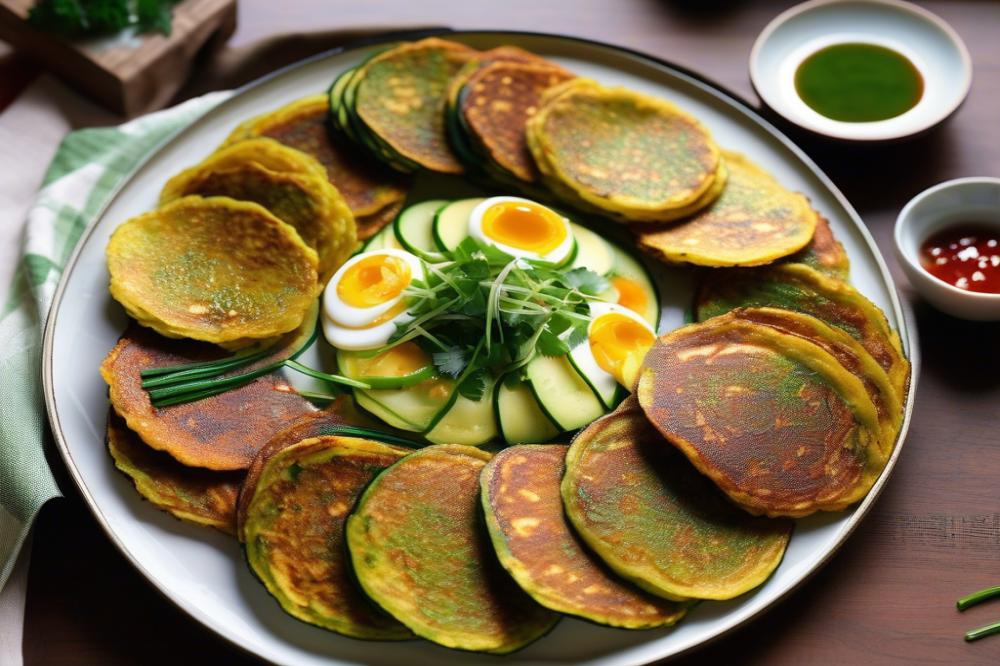
When it comes to enjoying these delicious zucchini pancakes, several accompaniments enhance their flavor. A simple bowl of steamed white rice pairs beautifully with them, creating a satisfying meal. Many appreciate the balance of textures. This dish works well as a side in a larger meal, too. Think of it as a complement to grilled meats or stir-fried vegetables.
Ideal Accompaniments
Kimchi is often served alongside Hobakjeon. The spicy, fermented flavors contrast nicely with the mild taste of the pancakes. Pickled radishes can also add a refreshing crunch. For a light and easy meal, consider a simple salad of mixed greens with sesame dressing. This adds freshness and brightens the overall dish. Sometimes, people replace rice with a warm bowl of miso soup; it enriches the dining experience.
Suggestions for Dipping Sauces
Dipping sauces can elevate these savory pancakes. Traditional soy sauce mixed with a dash of vinegar works well. You might prefer a simple garlic-y soy dip for extra flavor. A spicy chili sauce or gochujang can also be used for those who crave heat. Pour it into a small bowl for easy access during mealtime.
Context for Serving in Korean Meals
This dish is often enjoyed as part of a Korean meal. It’s suitable for lunch or dinner. When served with rice and a variety of banchan, it creates a delightful spread. Banchan refers to small side dishes that accompany the main meal. These pancakes are vegetarian-friendly and fit well within healthy cooking practices. Their preparation is straightforward, making them an easy recipe to follow for anyone new to Korean cuisine.
Creative Variations and Toppings
Feel free to get creative with the basics. Adding corn kernels or grated carrots can bring sweetness to the dish. Some like to incorporate herbs like green onions or cilantro for extra flavor. Toppings can also be adjusted. Consider a drizzle of sesame oil or a sprinkle of sesame seeds for added richness. Mixing in various vegetables transforms the texture, making every bite exciting. Experimenting with grated cheese can also be a tasty option for a fusion twist.
Final Thoughts on the Delight of Zucchini Pancakes
The allure of making these delicious Korean pancakes lies in their simplicity and taste. Using fresh ingredients like zucchini adds a vibrant flavor. Each bite is a burst of savory goodness that can transport you to a cozy kitchen in Korea. This dish is perfect for any meal, whether for breakfast or a light dinner.
Many find joy in experimenting with different toppings or dipping sauces. Try soy sauce mixed with vinegar for a classic experience. Feel free to add variety with herbs or other vegetables, making it your own. This recipe invites creativity and personal touches, which makes cooking even more enjoyable.
Encouragement goes a long way. Don’t hesitate to try this recipe! Gather your ingredients, roll up your sleeves, and dive into the process. It can be a fun activity to share with friends or family. You might be surprised at how quickly you master these savory treats.
As you savor the flavors of these delightful creations, think about the rich traditions of Korean cuisine. Each dish tells a story, connecting past generations to the present. Savoring food brings people together, creating memories that last a lifetime. Enjoy the process, taste the passion, and celebrate the joy of cooking.

